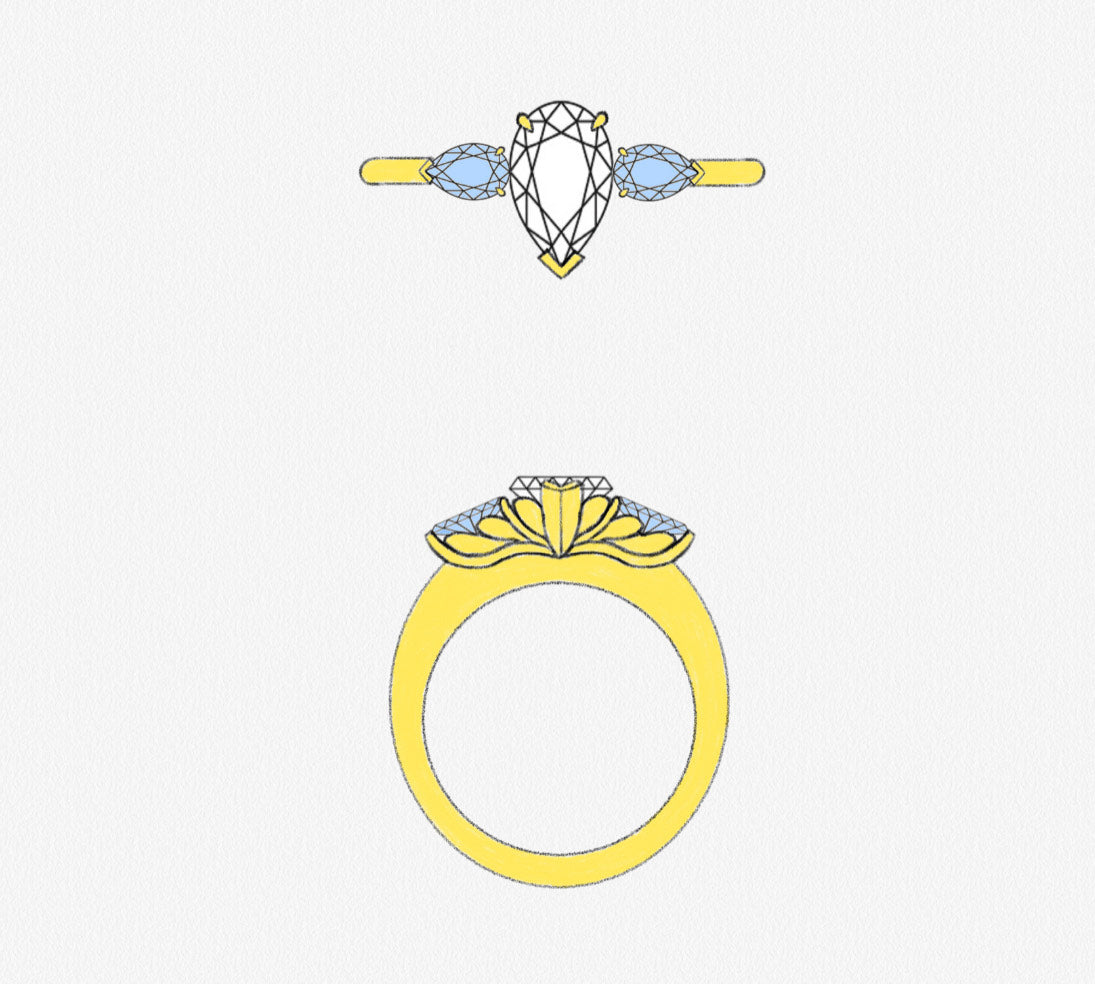Whisper thin bands, no gallery rail, diamond prongs - we get it, these design elements look stunning amidst a carefully curated Pinterest board of engagement ring inspiration.
But in reality, choosing these design elements to create your dream engagement ring could land you back at the jeweller sooner than you thought.
Why? Because these design elements hinder your engagement ring's overall durability, risk the security of your precious diamond or gemstone, and will 100% not last long enough to become the treasured heirloom you intended for it to be.
That's why one of the most crucial steps in your engagement ring buying process is choosing a good jeweller who knows the anatomy of a durable ring like the back of their hand - not a chain store that pumps out mass-produced pieces, or a business who focus on trends that will sell, not engagement rings that last.
Here are some of our engagement ring design elements to consider (or maybe reconsider!):
Band thickness
At XRONOS, our engagement ring bands sit around 2.20mm wide and 2.00mm thick at the bottom, becoming thicker as it tapers to the top. As a stone's size increases, so should the thickness of the band. One of the biggest red flags is engagement rings that have a band width and thickness below 2mm.
Why is it important? Because thin bands can warp and bend, especially when it's worn everyday. Thick bands have the durability to last and reinforce the overall strength of the piece. Plus, a thick band that is made well and tapers beautifully up towards a setting looks incredibly sophisticated and high-quality - so it's a win-win.

Photo: XRONOS Fine Jewellery custom trilogy engagement ring
Tension setting
Tension set, pressure set or floating set engagement rings look cool but they aren't for everyday wear. In this type of setting, the diamond or gemstone is secured in place through the tension of the metal - there is no basket, setting or prong, allowing a full display of the stone.
They are unique, and for a good reason - because they are not durable. They are not secure and one accidental knock in the wrong spot, your diamond or gemstone will go flying out. And if you don't knock the stone out, chances are within a few years, the hardness of the diamond will eventually wear into the malleability of the metal, eventually coming loose and falling out.
There are ways to achieve a similar look and show off the beauty of your stone without putting your engagement ring or stone at risk.

Photo: Tension setting via Etsy
Diamond prongs
Prongs are one of the major parts of the ring keeping your rock in place, and once you start hollowing out the thickness of the prongs to make room for diamonds, you start to lose durability. This might be okay for a special occasion cocktail ring, but not an engagement ring worn everyday.
If you really want that extra sparkly, we recommend opting for a pave or french-set band, or incorporating accent stones into the basket detail instead.
Not only does the below example have diamond prongs, it's also missing a gallery rail and the setting is plonked (for lack of better word) right on top of the band. That's 3 strikes in our books.

Photo: Diamond prong engagement ring via Etsy
No gallery rail
Simply put, a gallery rail is a bracing point. It's essential to support the setting and reduce stress on the prongs when it's accidentally knocked or bent back. For the love of your diamond, don't skimp on this.


